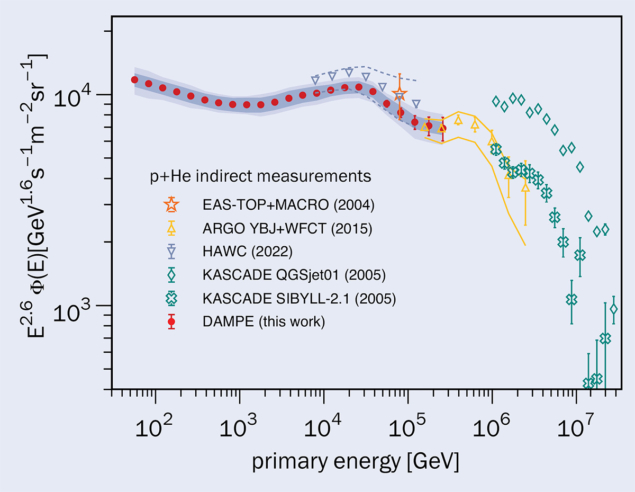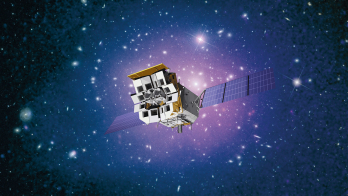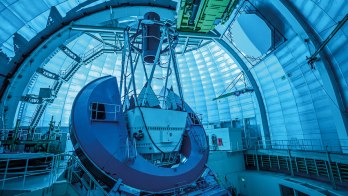
The exact origin of the high-energy cosmic rays that bombard Earth remains one of the most important open questions in astrophysics. Since their discovery more than a century ago, a multitude of potential sources, both galactic and extra-galactic, have been proposed. Examples of proposed galactic sources, which are theorised to be responsible for cosmic rays with energies below the PeV range, are supernova remnants and pulsars, while blazars and gamma-ray bursts are two of many potential sources theorised to be responsible for the cosmic-ray flux at higher energies.
When identifying the origin of astrophysical photons, one can use their direction. However, for cosmic rays this is not as straightforward due to the impact of galactic and extra-galactic magnetic fields on their direction. To identify the origin of cosmic rays, researchers therefore almost fully rely on information embedded in their energy spectra. When assuming just acceleration within shock regions of extreme astrophysical objects, the galactic cosmic-ray spectrum should follow a simple, single power law with an index between –2.6 and –2.7. However, thanks to measurements by a range of dedicated instruments including AMS, ATIC, CALET, CREAM and HAWC, we know the spectrum to be more complex. Furthermore, different types of cosmic rays, such as protons, and the nuclei of helium or oxygen, have all been shown to exhibit different spectral features with breaks at different energies.
New measurements by the space-based Chinese–European Dark Matter Particle Explorer (DAMPE) provide detailed insights into the various spectral breaks in the combined proton and helium spectra. Clear hints of spectral breaks were already shown previously by various balloon and space-based experiments at low energies (below about 1 TeV), and by ground-based air-shower detectors at high energies (> TeV). However, in the region where space-based measurements start to suffer from a lack of statistics, ground-based instruments suffer from a low sensitivity, resulting in relatively large uncertainties. Furthermore, the completely different way in which space- and ground-based instruments measure the energy (directly in the former, and via air-shower reconstruction in the latter) made it important to make measurements that clearly connect the two. DAMPE has now produced detailed spectra in the 46 GeV to 316 TeV energy range, thereby filling most of the gap. The results confirm both a spectral hardening around 100 GeV and a subsequent spectral softening around 10 TeV, which connects well with a second spectral bump previously observed by ARGO-YBJ+WFCT at an energy of several hundred TeV (see figure).
The complex spectral features of high-energy cosmic rays can be explained in various ways. One possibility is through the presence of different types of cosmic-ray sources in our galaxy; one population produces cosmic rays with energies up to PeV, while a second only produces cosmic rays with energies up to tens of TeV, for example. A second possibility is that the spectral features are a result of a nearby single source from which we observe the cosmic rays directly before they become diffused in the galactic magnetic field. Examples of such a nearby source could be the Geminga pulsar, or the young supernova remnant Vela.
In the near future, novel data and analysis methods will likely allow researchers to distinguish between these two theories. One important source of this data is the LHAASO experiment in China, which is currently taking detailed measurements of cosmic rays in the 100 TeV to EeV range. Furthermore, thanks to ever-increasing statistics, the anisotropy of the arrival direction of the cosmic rays will also become a method to compare different models, in particular to identify nearby sources. The important link between direct and indirect measurements presented in this work thereby paves the way to connecting the large amounts of upcoming data to the theories on the origins of cosmic rays.
Further reading
DAMPE Collab. 2023 arXiv:2304.00137.
C Yue et al. 2020 Front. Phys. 15 24601.








